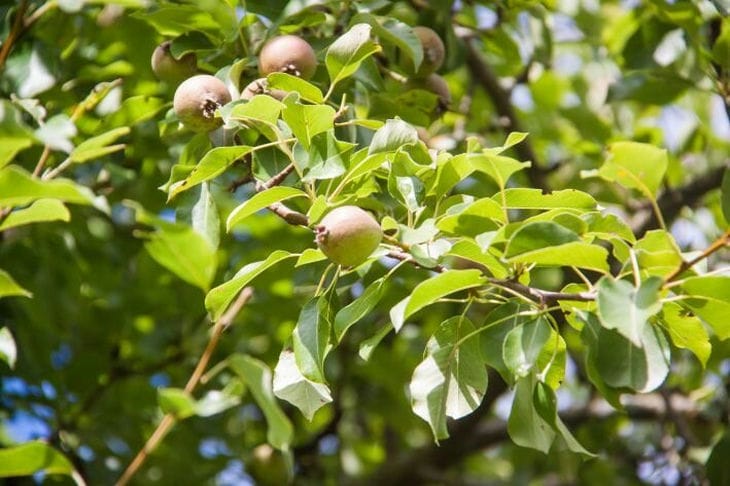Rust on pears and apple trees: how to get rid of and prevent
Rust is one of the most dangerous diseases that often attacks pears.
According to the expert of the online publication BelNovosti, scientist-agronomist, landscape designer Anastasia Kovrizhnykh, this disease can seriously harm not only these trees, but also other fruit crops.
How to recognize the disease
Signs of rust can be seen with the naked eye in the summer - during this period, the leaves and young shoots of infected plants become covered with brown spots.
After some time, the underside of the leaves becomes filled with growths containing fungal spores.
As a result, the leaves dry out and fall off, and the tree becomes weaker.

If you leave the plant without due attention and do not treat it, you will most likely say goodbye to it in a few years.
How to get rid of rust
1. If you don't want to put your garden at risk, avoid juniper and pear trees next to each other. The reason is that juniper acts as a carrier of fungal spores.
2. Shoots and branches with signs of infection must be removed. Don't forget to treat the cuts - a solution of copper sulfate will help you with this. This is the only way to block the infection's path to spread.
3. Treat pears with fungicides. Bordeaux mixture, Skor, etc. are popular among gardeners. This procedure should be carried out starting in early spring and lasting throughout the season.
The disease can be overcome at an early stage by using infusions of ash, mullein or marigolds.
4. If you are just thinking about planting a pear orchard on your plot, choose rust-resistant varieties for this purpose. These include Gordzala, Sakharnaya, Chizhovka, etc.
5. After the leaves fall from the trees, it is time for another treatment - this time with urea. In the spring, biological preparations should be used.
